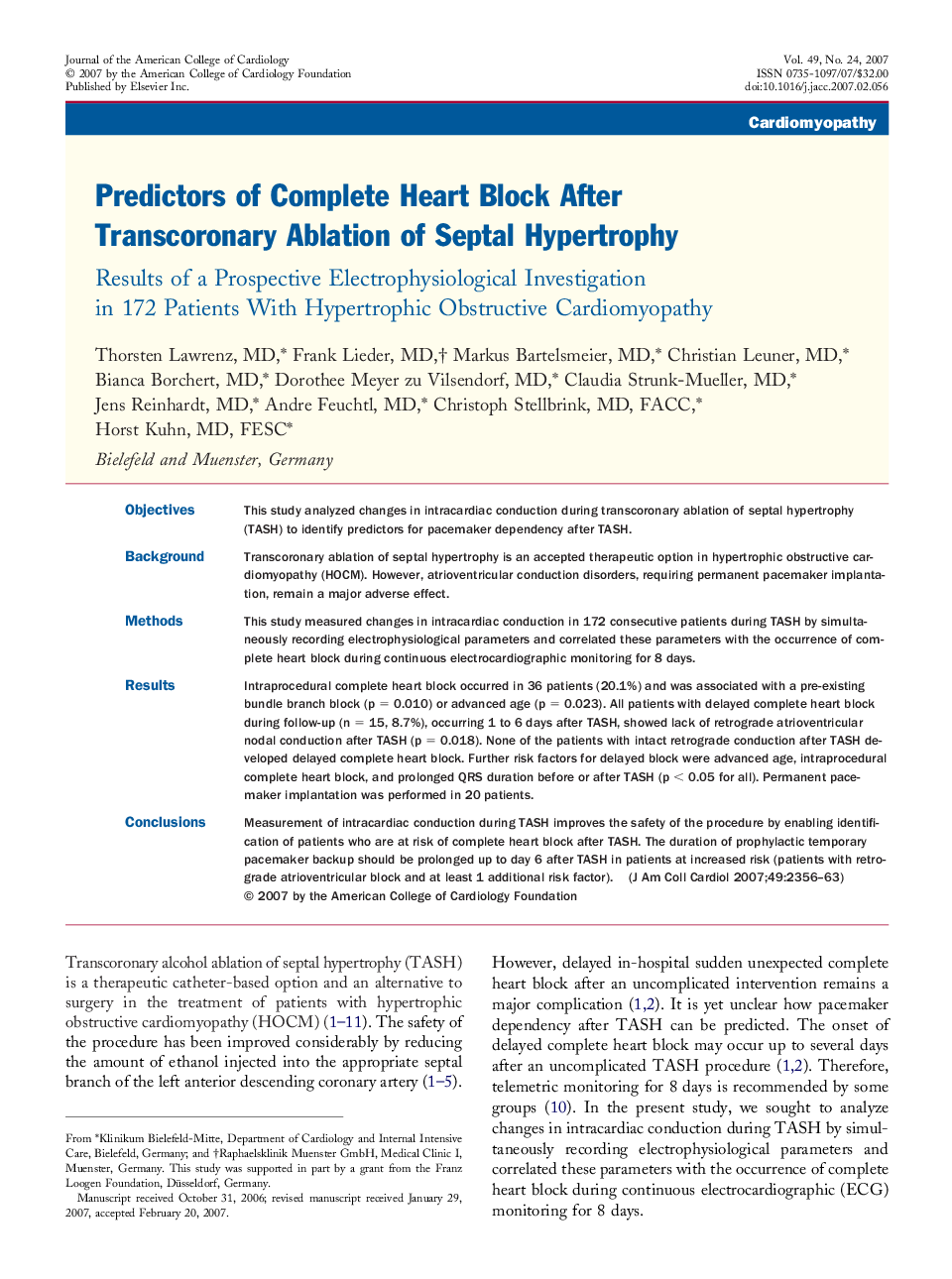| Article ID | Journal | Published Year | Pages | File Type |
|---|---|---|---|---|
| 2951251 | Journal of the American College of Cardiology | 2007 | 8 Pages |
ObjectivesThis study analyzed changes in intracardiac conduction during transcoronary ablation of septal hypertrophy (TASH) to identify predictors for pacemaker dependency after TASH.BackgroundTranscoronary ablation of septal hypertrophy is an accepted therapeutic option in hypertrophic obstructive cardiomyopathy (HOCM). However, atrioventricular conduction disorders, requiring permanent pacemaker implantation, remain a major adverse effect.MethodsThis study measured changes in intracardiac conduction in 172 consecutive patients during TASH by simultaneously recording electrophysiological parameters and correlated these parameters with the occurrence of complete heart block during continuous electrocardiographic monitoring for 8 days.ResultsIntraprocedural complete heart block occurred in 36 patients (20.1%) and was associated with a pre-existing bundle branch block (p = 0.010) or advanced age (p = 0.023). All patients with delayed complete heart block during follow-up (n = 15, 8.7%), occurring 1 to 6 days after TASH, showed lack of retrograde atrioventricular nodal conduction after TASH (p = 0.018). None of the patients with intact retrograde conduction after TASH developed delayed complete heart block. Further risk factors for delayed block were advanced age, intraprocedural complete heart block, and prolonged QRS duration before or after TASH (p < 0.05 for all). Permanent pacemaker implantation was performed in 20 patients.ConclusionsMeasurement of intracardiac conduction during TASH improves the safety of the procedure by enabling identification of patients who are at risk of complete heart block after TASH. The duration of prophylactic temporary pacemaker backup should be prolonged up to day 6 after TASH in patients at increased risk (patients with retrograde atrioventricular block and at least 1 additional risk factor).
